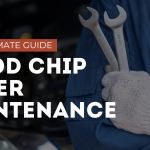The Critical Role of Drum Dryers in Modern Food Processing
In today’s competitive food manufacturing landscape, efficiency, product quality, and consistency have become non-negotiable factors for success. At the heart of many successful food processing operations sits the drum dryer—a versatile and reliable technology that has revolutionized how manufacturers transform liquid and semi-liquid food materials into shelf-stable, high-quality powdered and flaked products.
Drum dryers in the food industry represent a critical processing technology that enables manufacturers to extend product shelf life, reduce shipping costs, create new product formats, and preserve nutritional value while maintaining flavor profiles. Unlike alternative drying methods, drum drying offers unique advantages in terms of energy efficiency, space utilization, and product consistency that have made it indispensable across diverse food categories—from dairy and fruits to grains and functional ingredients.
As food manufacturers face increasing pressure to improve operational efficiency while meeting stringent quality and safety standards, understanding the capabilities, applications, and latest innovations in drum dryer technology has never been more important. This comprehensive guide explores how food-grade drum dryers function, where they excel, and what considerations should guide your investment decisions.
Understanding Drum Drying Principles for Food Applications
The fundamental principle behind drum drying in food processing involves the application of a thin film of liquid or semi-liquid food material onto the heated surface of a rotating drum. As the drum rotates, the product undergoes rapid moisture removal through conductive heat transfer—a process significantly more energy-efficient than convective drying methods used in spray dryers or fluid bed systems.
In food-specific applications, the drum drying process typically follows these stages:
- Application: The liquid food material is applied to the heated drum surface through various feeding mechanisms (dip feeding, spray application, or nip feeding between double drums).
- Film formation: The product forms a thin, uniform film (typically 0.5-2mm) on the drum surface, with thickness controlled through adjustable application systems.
- Moisture evaporation: As the drum rotates, intense conductive heat transfer (typically at temperatures between 120-170°C) rapidly removes moisture from the product.
- Product removal: After approximately 75% of a full rotation, a knife blade (doctor blade) scrapes the dried product from the drum surface in sheet or flake form.
- Collection and processing: The dried product is then collected and may undergo additional milling, sifting, or packaging operations depending on final application requirements.
What makes drum drying particularly valuable for food applications is its ability to handle high-viscosity products, pre-gelatinized starches, and heat-sensitive formulations that might be damaged or less efficiently processed using alternative drying technologies. The rapid film formation and controlled heat exposure also help preserve important sensory attributes in many food applications.
Unique Advantages of Drum Dryers for Food Manufacturers
Food processing drum dryers offer several distinct advantages that have secured their position as preferred drying technology across numerous food categories:
- Superior product texture control: The conductive heat transfer and thin-film processing create unique structural characteristics ideal for products like potato flakes and instant formulations.
- Pre-gelatinization capabilities: Starches and flours simultaneously undergo gelatinization and drying, creating instantly soluble ingredients difficult to produce with other drying methods.
- Excellent energy efficiency: Direct conductive heat transfer typically requires 30-40% less energy than equivalent spray drying operations.
- Compact installation footprint: Drum dryers require significantly less physical space than spray drying towers or fluid bed systems with equivalent capacity.
- High solids handling capability: Can efficiently process feeds with 15-50% initial solids content, reducing pre-concentration requirements.
- Gentle processing option: When properly configured, drum drying can preserve heat-sensitive ingredients better than some alternative technologies.
- Excellent CIP compatibility: Modern food-grade drum dryers feature full clean-in-place capabilities meeting stringent sanitation requirements.
- Versatile product formats: Can produce sheets, flakes, or powders through post-drying processing adjustments.
Key Benefits of Drum Dryers in Food Processing
- Reduced energy consumption compared to spray drying (typically 30-40% less)
- Smaller facility footprint requirements (up to 60% space reduction vs. spray drying)
- Ability to handle high-viscosity products that challenge other drying systems
- Excellent for creating instantly soluble, pre-gelatinized ingredients
- Consistent particle size and moisture content in final products
- Preservation of many nutritional compounds through controlled, rapid drying
- Lower maintenance costs than comparable freeze-drying systems
- Scalable technology from pilot to industrial production volumes
Comparison: Drum Dryers vs. Other Food Drying Technologies
| Feature | Drum Dryers | Spray Dryers | Freeze Dryers | Fluid Bed Dryers |
|---|---|---|---|---|
| Energy Efficiency | High | Moderate | Low | Moderate |
| Space Requirements | Moderate | High | Moderate | Moderate-High |
| Initial Investment | Moderate | High | Very High | Moderate |
| Product Texture Control | Excellent | Good | Excellent | Limited |
| Heat-Sensitive Ingredients | Good with proper configuration | Moderate | Excellent | Moderate |
| Pre-gelatinization Capability | Excellent | Poor | Poor | Poor |
| High-Viscosity Handling | Excellent | Poor | Good | Poor |
| Throughput Rates | High | Very High | Low | Moderate |
| Batch vs. Continuous | Continuous | Continuous | Typically Batch | Both Options |
Drum Dryer Applications Across Food Categories
Dairy Products: Transforming Liquid Milk into Shelf-Stable Ingredients
In dairy processing, drum dryers play a crucial role in producing a variety of ingredients that form the backbone of many food formulations:
- Milk powders: While spray drying dominates bulk milk powder production, drum dryers excel in specialized applications where instant solubility or agglomerated properties are required.
- Cheese powder production: Drum dryers can process cheese concentrates into flavorful, easily dispersible powders for snack seasonings, sauces, and ready meals.
- Yogurt powders: The drum drying process preserves many of the sensory properties of yogurt while creating shelf-stable powder formats.
- Dairy-based infant formula components: Certain specialized ingredients benefit from the unique structural modifications achieved through drum drying.
The ability to handle high-fat dairy products without significant cleaning challenges makes food-grade drum dryers particularly valuable in cheese processing applications. Modern dairy-focused drum dryer systems incorporate specialized feeding mechanisms and surface treatments that prevent protein build-up and facilitate effective cleaning protocols.
Fruit and Vegetable Processing: Preserving Flavor and Nutrition
The fruit and vegetable sector has embraced drum drying technology for multiple applications:
- Potato flakes for instant mashed potatoes: Perhaps the most recognized drum-dried food product, these flakes require precise control of gelatinization and film formation that only drum drying can efficiently provide.
- Fruit purees and powders: Drum drying preserves color, flavor, and nutritional compounds while creating shelf-stable fruit ingredients for snacks, cereals, and confectionery.
- Vegetable powders: From tomato powder to pumpkin and carrot ingredients, drum drying creates versatile vegetable ingredients with good color retention and reconstitution properties.
- Soup and sauce bases: Pre-gelatinized vegetable starches and vegetable concentrates form the foundation of many convenience food applications.
The drum drying process is particularly valued in fruit applications for its ability to maintain natural pigmentation and flavor compounds better than some alternative technologies. For vegetables containing high starch content, the simultaneous gelatinization and drying creates unique functional properties impossible to achieve with other drying methods.
Cereal and Grain Processing: Creating Functional Ingredients
Cereal manufacturers rely on drum dryers to create:
- Pre-gelatinized flours and starches: These instantly soluble ingredients provide thickening and texture in various food applications without cooking.
- Cereal-based baby foods: The controlled gelatinization process creates easily digestible, instantly reconstitutable baby cereals.
- Specialty grain ingredients: Ancient grains and alternative cereal sources can be processed into highly functional ingredients.
- Breakfast cereal components: Many ready-to-eat cereals incorporate drum-dried ingredients for texture and nutritional enhancement.
The versatility of drum dryers allows manufacturers to process various grain-based slurries with different viscosities and solids content, making them ideal for product development and innovation in the cereal category.
Functional Food Ingredients: Supporting Health and Wellness Products
The growing functional food sector leverages drum drying technology for:
- Protein concentrates: Plant and dairy proteins can be transformed into more soluble, application-friendly formats.
- Fiber ingredients: Certain dietary fibers benefit from the structural modifications achieved through drum drying.
- Probiotic carriers: When configured for lower-temperature operation, drum dryers can create protective matrices for probiotic cultures.
- Nutritional beverage bases: Instantly dispersible nutritional formulations rely on the unique properties of drum-dried ingredients.
The ability to handle high-viscosity, complex formulations makes drum drying particularly valuable as manufacturers develop increasingly sophisticated functional ingredients with specific nutritional and bioactive properties.
Key Considerations When Selecting a Drum Dryer for Food Applications
Food manufacturers evaluating drum dryer technology should consider several critical factors:
Material Compatibility and Product Characteristics
- Initial solids content: Most food applications perform optimally between 15-40% initial solids.
- Viscosity profile: How the material’s viscosity changes during heating affects film formation and product consistency.
- Heat sensitivity: Temperature-sensitive components (vitamins, proteins, flavors) may require specialized drum configurations.
- Stickiness factor: Certain high-sugar or high-protein formulations may require specialized drum surface treatments.
Operational Requirements
- Required production capacity: From pilot-scale (20-50 kg/hr) to industrial production (up to 2,000+ kg/hr).
- Batch size flexibility: Some operations require frequent changeovers between different products.
- CIP requirements: Sanitation protocols must align with your facility standards.
- Energy source availability: Steam, thermal oil, or electric heating options are available.
Food Safety and Regulatory Compliance
- Food-grade materials of construction: All contact surfaces must meet appropriate food safety standards.
- Clean-in-place (CIP) validation: The system must support validated cleaning protocols.
- Temperature monitoring and validation: Critical for HACCP compliance.
- Allergen management capabilities: If processing multiple formulations, allergen cleaning protocols must be validated.
Food Safety and Regulatory Compliance for Drum Dryers
Modern food processing drum dryers incorporate numerous design features specifically addressing food safety regulations:
Sanitary Design Elements
- 316L stainless steel contact surfaces with electropolished finishes to prevent bacterial harborage
- EHEDG-compliant components with self-draining surfaces and eliminated dead spots
- Fully automated CIP systems with spray ball coverage verification
- Validated cleaning processes with monitoring and documentation capabilities
Regulatory Documentation Requirements
Food manufacturers operating drum dryers should maintain:
- Material certificates for all food-contact components
- Welding certifications and surface finish documentation
- Temperature mapping validation studies
- CIP validation protocols and records
- Preventive maintenance documentation
- Calibration records for critical instruments
As global food safety standards continue to evolve, drum dryer manufacturers have responded with increasingly sophisticated designs specifically engineered to meet FSMA, GFSI, and other regulatory frameworks.
Case Studies: Successful Drum Dryer Implementations
Premium Instant Mashed Potato Producer
A leading European producer of premium instant mashed potatoes recently upgraded from single-drum to double-drum technology, achieving:
- 40% increase in production capacity within the same facility footprint
- 22% reduction in energy consumption per ton of product
- Improved product solubility and sensory properties
- Enhanced CIP capabilities reducing cleaning time by 35%
Organic Fruit Powder Manufacturer
A specialty organic fruit powder company implemented a custom drum dryer system with:
- Low-temperature vacuum operation for sensitive fruit varieties
- Specialized edge control system eliminating product loss
- Integrated milling and sifting technology
- Result: 98.5% retention of natural color compounds and 92% retention of vitamin C
Plant-Based Protein Ingredient Company
A manufacturer of plant protein ingredients utilized drum drying technology to create:
- Instantly dispersible pea and rice protein ingredients
- Improved flavor profiles through controlled heat treatment
- Elimination of anti-nutritional factors
- Result: 200% sales growth within 18 months of product launch
Recent Innovations in Food-Grade Drum Dryer Technology
The evolution of drum dryers for food processing continues, with several notable innovations benefiting manufacturers:
Enhanced Surface Technologies
- Advanced ceramic coatings providing superior release properties for sticky formulations
- Laser-textured surfaces optimized for specific product categories
- Antimicrobial surface treatments reducing biofilm formation risks
Intelligent Control Systems
- Real-time film thickness monitoring with automatic adjustment capabilities
- Advanced thermal imaging for temperature uniformity verification
- Predictive quality control utilizing machine learning algorithms
- Digital twin modeling for process optimization without production disruption
Sustainability Enhancements
- Heat recovery systems capturing up to 45% of evaporated moisture energy
- Variable speed drives optimizing energy consumption during partial load operation
- Water recycling systems for CIP operations
- Advanced insulation reducing ambient heat loss by up to 30%
Hybrid Processing Configurations
- Integrated pre-concentration units optimizing overall system efficiency
- Post-drying agglomeration creating specialized particle structures
- Powder handling innovations reducing dust and improving worker safety
Conclusion: Selecting the Right Drum Dryer for Your Food Manufacturing Operation
For food manufacturers considering investment in drum dryer technology, a systematic approach to evaluation yields the best results:
- Begin with product development: Conduct pilot-scale trials on representative formulations to verify suitability.
- Define capacity requirements: Account for seasonal fluctuations and anticipated growth over a 5-7 year horizon.
- Evaluate total cost of ownership: Initial investment typically represents only 30-40% of lifetime costs, with energy consumption often dominating operational expenses.
- Consider operational flexibility: If your product portfolio includes multiple formulations, prioritize systems with rapid changeover capabilities.
- Engage equipment suppliers early: The most successful implementations involve equipment manufacturers during facility planning stages.
- Invest in operator training: Skilled operators typically increase productivity by 15-20% over minimally trained personnel.
The drum dryer’s century-long history in food processing is testament to its effectiveness, but today’s advanced designs offer capabilities far beyond their predecessors. For food processors seeking optimal balance between product quality, operational efficiency, and regulatory compliance, modern drum drying systems represent a technology investment that continues to deliver compelling returns across diverse food categories.




